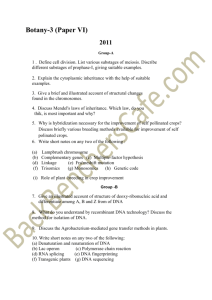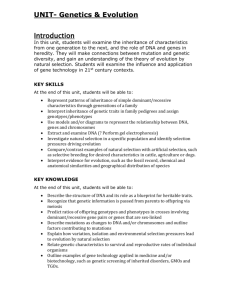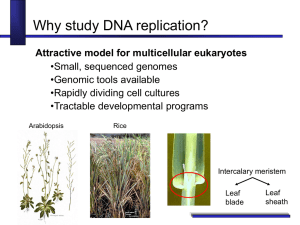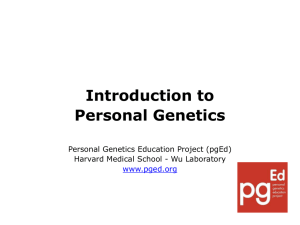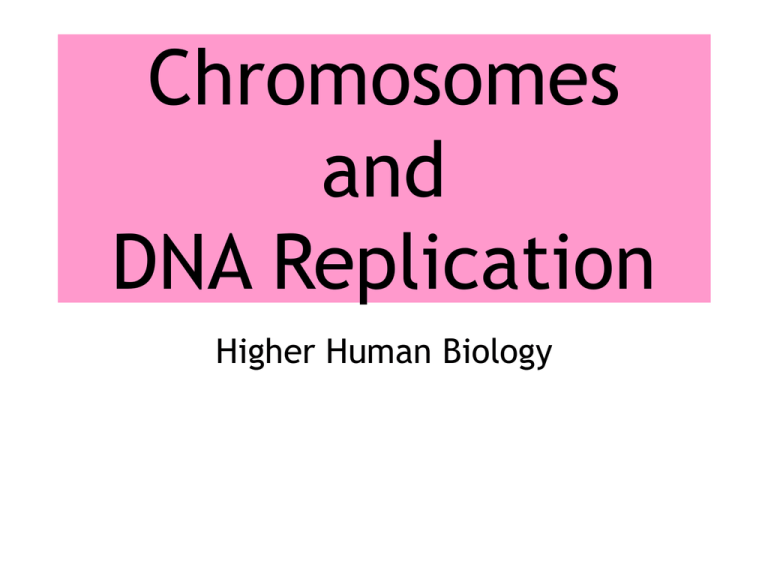
Chromosomes
and
DNA Replication
Higher Human Biology
Lesson Aims
•
•
•
•
To revise structure of DNA
To examine DNA replication
To revise mitosis
To examine meiosis
Maurice Wilkins (1916-2004) and
Rosalind Franklin (1920-1958)
used X ray
crystallography to
determine chemical
structure of DNA
research formed
bases of Watson and
Crick’s DNA double
helix theory
X-Ray diffraction of DNA
James Watson(1928-)
and Francis Crick (1916-2004)
Determined
double-helix
structure of DNA
in 1953
DNA Structure
Sugar-phosphate
backbone
Base
DNA Structure
Human Karyotype
• 22 pairs of homologous
chromosomes –
autosomes
• 1 pair – sex
chromosomes
• All cells have double
set of chromosomes
(diploid) except
gametes which have 1
set (haploid)
Human Male Karyotype
DNA Replication
Semi-conservative Replication
• 2 new strands each
containing 1 of the
original strands
• Ensures exact copy of
genetic information is
passed from cell to
cell and from one
generation to the next
enabling continuity of
life
Nuclear Division
• Mitosis – nucleus of normal body cell divides into
2 daughter nuclei
• Meiosis – sex cell production. Nucleus of gamete
mother cell divides into 4 daughter nuclei with
23 chromosomes
Genetic code
• In 1966, the Genetic code was discovered
• Human Genome Project to determine nucleotide
sequence of human DNA began in 1990 and was
completed in 2003.
• Scientists are now able to predict characteristics
by studying DNA. This leads to genetic
engineering, genetic counseling.
Genetic code
An international
team of scientists
began the project
to map the human
genome.
Genetic Code
Genetic Code
In 1990, gene therapy
was used on patients
for the first time
Genetic Code
In 1994, the FDA
approved the first
genetically engineered
food - FlavrSavr
tomatoes engineered
for better flavour and
shelf life.
The Facts You Need To Know
• page 5
• from “chromosomes contain genetic
information….”
• to “thus the human population contains…”

